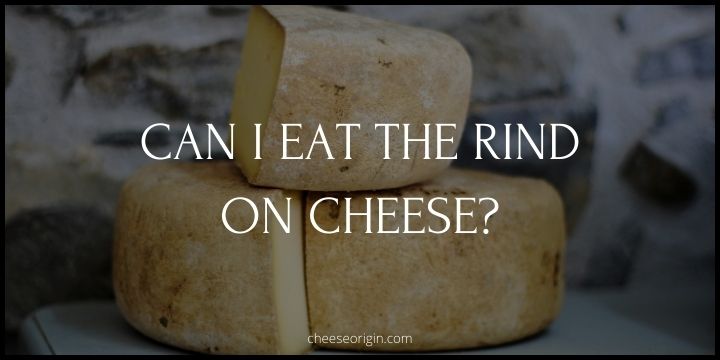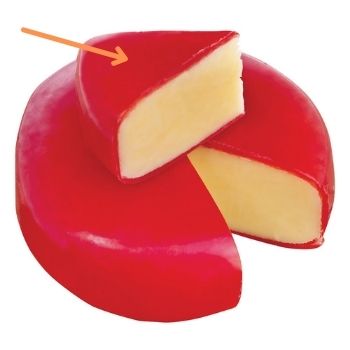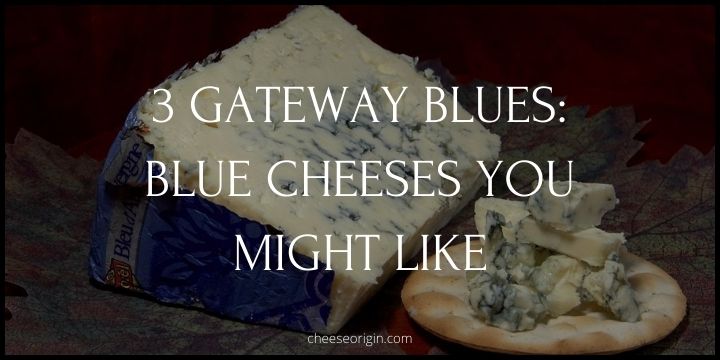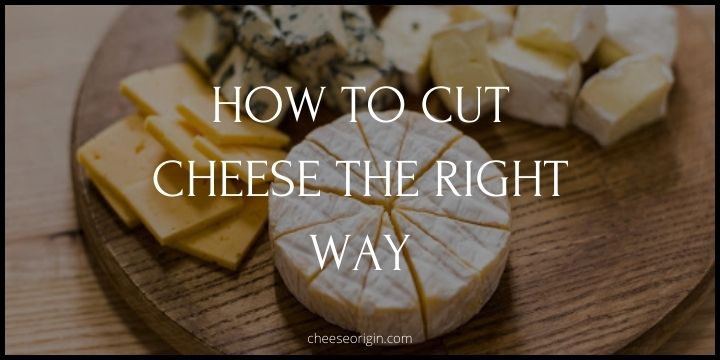Can I Eat the Rind on Cheese?

The cheesemaker took the extra effort and went through a lot of trouble to create a beautiful, consistent rind that protects and adds flavor + texture to the cheese.
So in short: Yes, you can eat the rind of cheese! Rinds are meant to be eaten.
Even the most unappetizing rinds are in no way poisonous or dangerous to consume.
Some rinds are indeed more appealing than others. What matters is the flavor. It is totally up to you if you want to eat the rind or not.
The only time you should NOT eat the rind is when a cheese is covered in wax or its exterior is hard and not chewable.
TIP: you can store super-long-aged wheels like Parmigiano-Reggiano‘s rinds in your freezer to make incredible unami-rich broth.
What Cheeses Can You Not Eat the Rind?
- Gouda: This popular Dutch cheese is known for its bright red or yellow wax rind.
- Edam: Another Dutch cheese, Edam is typically encased in red or black wax.
- Babybel: These small, snack-sized cheeses are instantly recognizable by their red wax coating.
- Jarlsberg: This Norwegian cheese is often sold with a wax rind.
- Port Salut: This semi-soft French cheese traditionally has an orange wax rind.
- Cheshire: An English cheese, Cheshire can come with a wax rind, especially when sold in smaller portions.
- Bel Paese: This Italian cheese often comes in small rounds with a wax coating.
- Manchego: While traditionally Manchego doesn’t have a wax rind, some commercial versions of this Spanish cheese do.
Remember, while the wax rind helps preserve the cheese and can add to its visual appeal, it’s not meant to be consumed. Always remove the wax coating before eating these cheeses.
This is When You Should Not Eat Rind

Firstly, I hope it goes without saying that obvious inedible rind treatments like leaves, bark, wax, or cloth should be discarded and NOT be eaten.
Secondly, if you are really not a fan of rinds (edible ones), don’t force yourself to eat them.
At the end of the day, eating cheese should be a pleasurable sensory experience.
Otherwise, why eat cheese at all?
Here’s a table of reasons not to eat the rind (the 2nd and 3rd are stupidly obvious, but why not?):
| Type of Cheese | Examples | Reason Not to Eat the Rind |
|---|---|---|
| Wax-coated Cheeses | Gouda, Edam | The cheeses are coated in a non-edible, thick layer of wax for preservation. |
| Clothbound Cheeses | Traditional Cheddar, Stilton | These cheeses are wrapped in cloth during aging which can leave behind a hard, gritty residue that is unpleasant to eat. |
| Cheeses with Plastic or Foil Wrappers | Processed cheese slices | The wrappers are purely for packaging and are not meant to be eaten. |
| Cheeses with Ash Rinds | Morbier, Humboldt Fog | While the ash itself is edible and often consumed, some people may find its flavor too strong or its texture too gritty. |
| Blue Cheeses | Roquefort, Gorgonzola | The moldy rind of blue cheese is technically edible, but it has a very strong, intense flavor that many people find off-putting. |
Why You Should at Least Taste the Rind of Each Cheese
Avoiding an edible rind is like looking at an expensive artistic painting through the eye of a needle: you will not see the whole beautiful picture.
Furthermore, you are not getting the most bang for your buck. You paid a premium for that rind you are leaving on the plate.
By at least tasting the rind, you are expanding your tastes and educating yourself – you are further than most people in that way – you will be familiar with the taste, its style, and its origin.
This gives you real knowledge and something interesting to share about in your next plater gathering.
Frequently Asked Questions
1. Do you cut the wax of cheese?
Yes, you should cut off the wax from the cheese before eating it. The wax on cheeses like Gouda, Edam, or Babybel is used to protect the cheese and help it maintain its moisture and flavor during storage. While the wax is food-safe, it’s not meant to be eaten.
2. What is the purpose of cheese wax?
Cheese wax serves several important purposes:
- Preservation: Wax is a natural preservative that helps cheese maintain its freshness by preventing the growth of bacteria and mold.
- Moisture Retention: It keeps the cheese moist by preventing the evaporation of its natural moisture, ensuring the cheese doesn’t dry out.
- Flavor Protection: The wax seals in the cheese’s flavor and prevents it from absorbing other flavors present in the fridge or storage area.
- Aging Process: For certain types of cheese, the wax can contribute to the aging process, affecting the texture and taste development.
- Identification: Different colors of wax are often used to differentiate between varieties of cheese or to indicate the type of milk used.
3. Can you eat the rind on Camembert?
Yes, the rind on Camembert cheese is indeed edible. The rind is a result of a mold called Penicillium camemberti, and it’s safe to eat.
It can have a strong flavor, which some people enjoy as it adds to the overall complexity of the Camembert’s taste.
However, it’s a matter of personal preference, and if you find the rind too strong, you can certainly remove it before eating.
>> Click here to read our in-depth guide on Camembert
Conclusion
It’s clear that cheese rinds are indeed safe to eat, with their edibility often enhancing the overall flavor of the cheese.
However, it’s essential to distinguish between edible rinds and inedible ones like those made from wax or other non-food materials.
Therefore, while you can enjoy many cheese rinds, always ensure you’re consuming the types intended for eating to fully savor your cheese experience.
Articles You Might Be Interested In:





